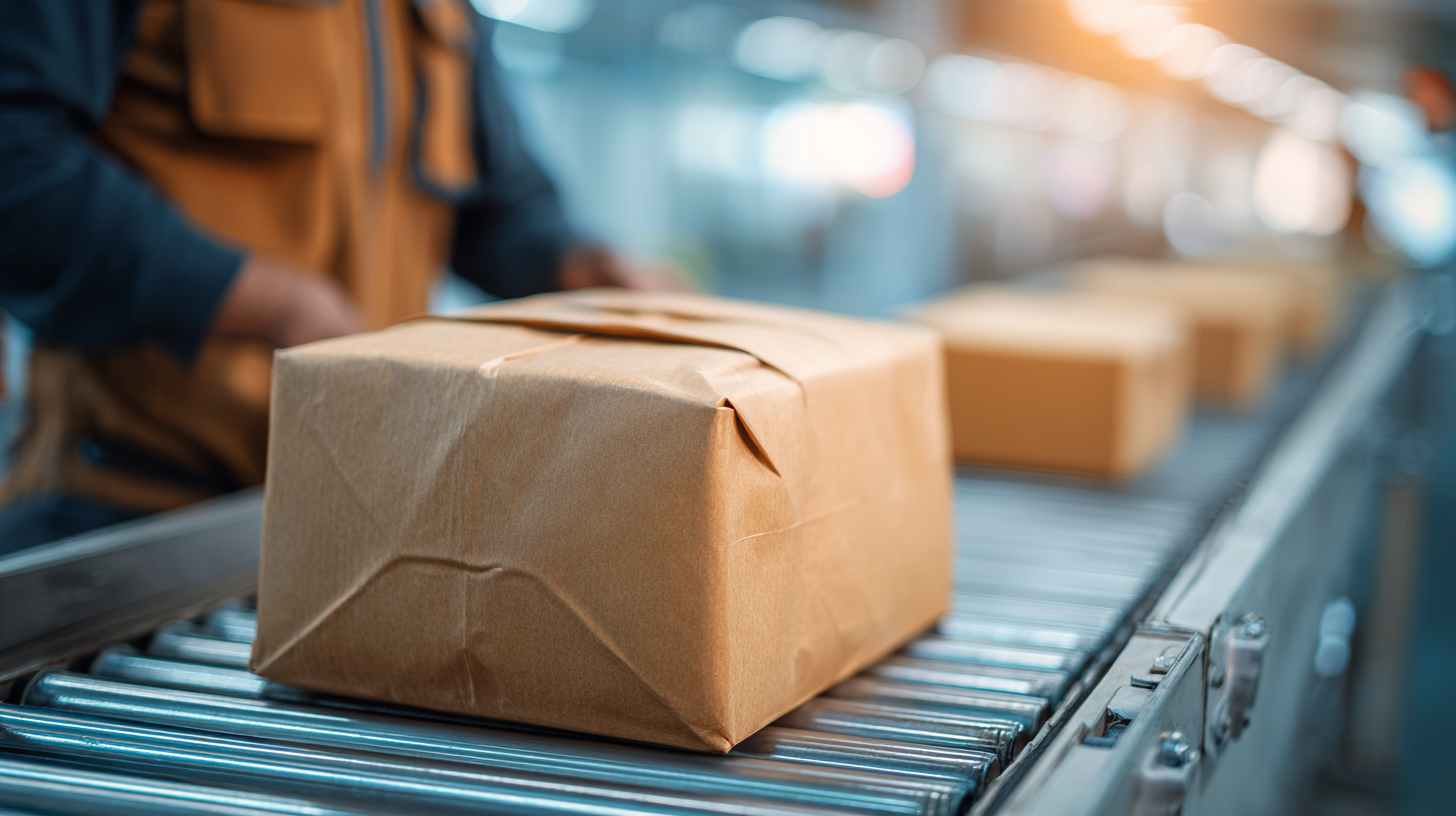
7 Top Reasons Why Best Shipping Bag Solutions Enhance Your Supply Chain
In today’s fast-paced market, businesses are increasingly turning to innovative solutions to optimize their supply chains, and one of the most effective strategies is the adoption of high-quality shipping bags. These shipping bags not only provide a safe and efficient way to transport goods but also offer a range of alternatives that can significantly enhance operational efficiency. With the rise of e-commerce and global trade, the demand for versatile and durable shipping bag options has never been greater. In this blog post, we will explore the top reasons why selecting the best shipping bag solutions can transform your supply chain dynamics, streamline your logistics processes, and ultimately lead to better customer satisfaction. From improved protection against damage to increased cost-effectiveness, the right shipping bags can make a world of difference in your shipping strategy.

Benefits of Durable Materials in Shipping Bags
Durable materials in shipping bags play a crucial role in enhancing the efficiency and reliability of supply chains. When these bags are made from robust materials such as high-density polyethylene or reinforced polypropylene, they offer unparalleled protection for the contents during transit. This durability not only minimizes the risk of damage from external factors like moisture and abrasion but also ensures that products arrive at their destination in pristine condition. As a result, businesses can maintain customer satisfaction and reduce returns due to damaged goods.
Moreover, investing in durable shipping bags can lead to long-term cost savings for companies. These materials often boast greater resistance to wear and tear, which means they can be reused multiple times before needing replacement. This longevity contributes to a more sustainable shipping process and decreases the frequency of purchasing new packaging. Additionally, the reliable nature of these shipping bags enhances operational efficiency by reducing delays linked to lost or damaged shipments. Ultimately, the use of high-quality materials not only fortifies the supply chain but also positions businesses for growth by fostering trust with their clientele.
Impact of Customization on Brand Recognition
In today’s competitive marketplace, branding is more crucial than ever, and customization plays a pivotal role in enhancing brand recognition. When businesses opt for customized shipping bags, they not only improve their packaging aesthetics but also create a unique identity that sets them apart. Customization allows brands to incorporate logos, taglines, and distinctive designs, making their packages instantly recognizable to consumers. This visual appeal can significantly boost brand recall, ensuring that customers remember their products long after the unboxing experience.
Moreover, the impact of customized shipping bags extends beyond mere aesthetics; it fosters a deeper emotional connection with the customer. A well-designed bag that reflects the brand's values and story can evoke feelings of loyalty and trust. Whether through eco-friendly materials or vibrant colors, these personalized touches resonate with target audiences, influencing their perception and purchasing decisions. In an era where consumer preferences are shifting towards brands that prioritize individuality and sustainability, customized shipping solutions can be a powerful tool in enhancing a company’s reputation and visibility in the supply chain.
Cost Efficiency of Optimized Shipping Solutions
Optimizing shipping solutions has become essential for businesses aiming to enhance operational efficiency and reduce costs within the supply chain. Recent assessments highlight the significance of utilizing advanced shipping bag solutions, which can lead to substantial cost savings. For example, logistics providers are demonstrating that optimizing Less-than-Truckload (LTL) needs can result in reductions of up to 20% in transportation costs, showcasing the financial impact of smart shipping strategies.
Tips: Focus on selecting shipping materials that not only protect products but also reduce package weight. Lighter materials can cut shipping expenses significantly, and using the right size reduces dimensional weight charges. Additionally, integrating automated solutions can streamline operations, further driving down costs.
As the eCommerce landscape evolves, the demand for faster fulfillment has never been greater. Businesses must balance this need with cost efficiency. Reports suggest that companies implementing AI-driven automation tools are discovering up to a 30% reduction in fulfillment costs. By embracing technologies that facilitate quick, precise deliveries, businesses can meet customer expectations while maintaining profitability.
Tips: Evaluate different shipping methods and tools regularly to identify which solutions offer the best rates and times. Utilizing analytics can help businesses understand shipping trends and optimize their strategies accordingly.

Role of Eco-Friendly Shipping Bags in Sustainability
Eco-friendly shipping bags have become an essential component in enhancing the sustainability of supply chains. As industries increasingly recognize the impact of packaging on the environment, the shift towards biodegradable and recyclable materials is gaining momentum. These innovative solutions not only reduce waste in landfills but also minimize the carbon footprint associated with traditional shipping methods. By adopting eco-friendly shipping bags, businesses are demonstrating their commitment to sustainability, effectively appealing to environmentally conscious consumers.
Moreover, the use of sustainable shipping materials can lead to cost savings in the long run. Many eco-friendly options are designed to be lightweight, reducing shipping costs and fuel consumption. As companies streamline their operations by integrating these bags, they can improve their overall efficiency while still committing to environmental responsibility. This dual focus on sustainability and efficiency positions businesses as leaders in their respective fields, fostering customer loyalty and enhancing brand reputation. As we advance towards greener practices, eco-friendly shipping bags serve not just as a packaging solution, but as a vital step toward a sustainable future.
7 Top Reasons Why Best Shipping Bag Solutions Enhance Your Supply Chain
| Reason | Description | Eco-Friendly Impact |
|---|---|---|
| Cost Efficiency | Reduced packaging costs by using lightweight materials. | Lower carbon footprint through reduced transportation weight. |
| Durability | Enhanced protection for products during transit. | Decreased product waste due to shipping damage. |
| Customization | Flexible designs that cater to unique product sizes. | Minimal excess packaging material usage. |
| Sustainability | Use of biodegradable and recyclable materials. | Promotes a circular economy through recycling efforts. |
| Brand Image | Enhances brand perception through eco-friendly practices. | Encourages consumer loyalty and trust. |
| Versatility | Suitable for a wide range of products and industries. | Reduces reliance on multiple packaging solutions. |
| Regulatory Compliance | Meets various environmental regulations and standards. | Helps companies avoid fines and enhances compliance. |
Streamlining Logistics with Innovative Packaging Design
In today's fast-paced logistics environment, innovative packaging design is pivotal in streamlining supply chains. Packaging solutions are no longer just about containment; they play a crucial role in optimizing logistics processes. As trends like automation and advanced returns forecasting gain traction, smarter packaging technologies can significantly reduce the time and costs associated with handling goods. By integrating AI and data analytics into packaging design, companies can predict logistics needs more accurately and enhance the efficiency of their supply chains.

Moreover, the shift towards sustainability in the logistics sector emphasizes the importance of innovative packaging solutions. Companies are increasingly adopting circular economy models that prioritize waste reduction and resource efficiency. Advances in packaging technology not only minimize environmental impact but also meet the rising consumer demand for eco-friendly practices. As organizations aim to create more resilient supply chains, the choice of shipping bags and packaging materials becomes a strategic advantage, aligning operational efficiency with sustainable objectives.



